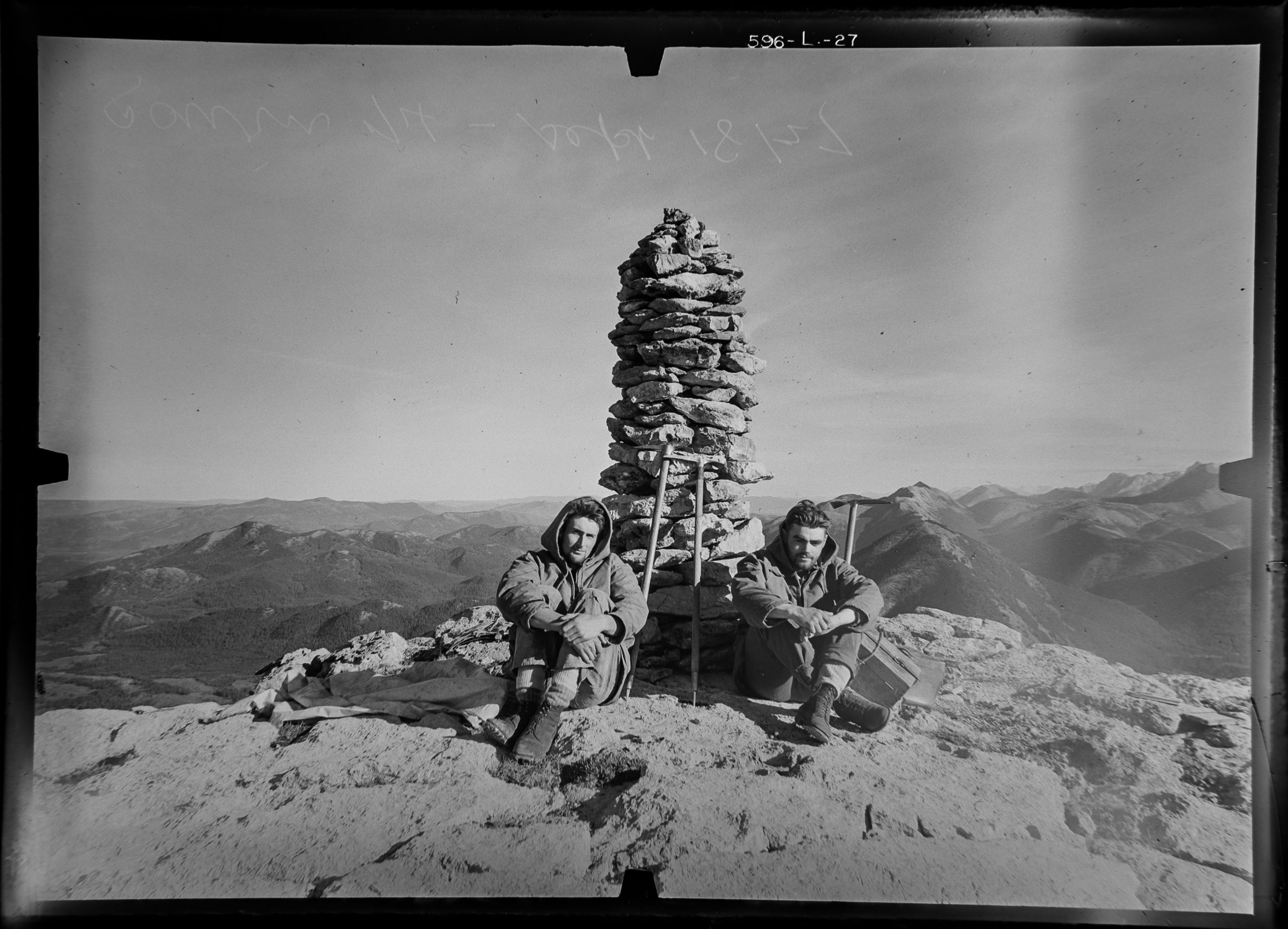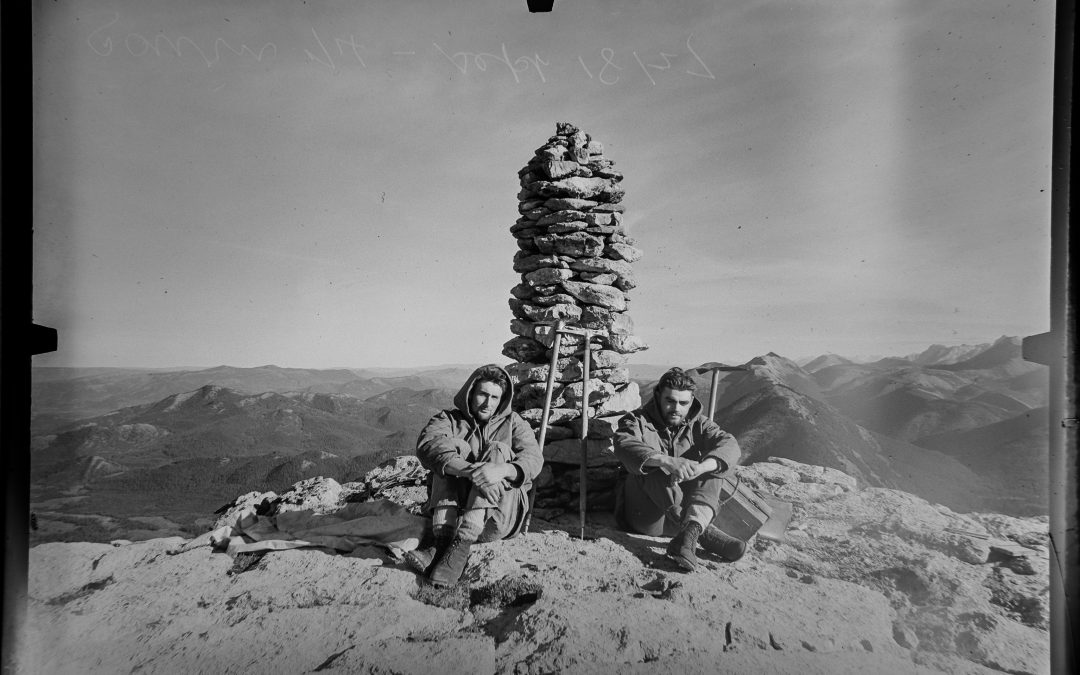By Sarah Jacobs
Generations of scientists, adventurers and poets have found solace and wisdom in mountain places. This essay follows connections between their pursuits to argue that scientific knowledge derives more from risk, wonderment and devotion than is often acknowledged. And that the experience of getting to a mountaintop – the struggle, pleasure and reward – is inseparable from the knowledge gained.
*******
Did you know Charles Darwin was a mountain climber? Of course, his climbing accomplishments are eclipsed by his other achievements (and don’t we mostly think about him in relation to islands and finches?). Even so, dozens of mountains are named in his honour. He climbed, as did many alpinists in the nineteenth century, to further science. Much later, the sport of mountaineering emerged, perhaps heralded by George Mallory’s rationale for climbing Everest: “because it is there.” Yet long before Mallory and all of the technological innovations and invited challenges that followed him – from solo ascents to winter climbs and navigating sheer faces – Darwin and numerous others including de Saussure, von Humboldt and Tyndall ascended mountains to gain knowledge.
 Frozen Lake, 1905, Donaldson Bogart Dowling, surveyor
Frozen Lake, 1905, Donaldson Bogart Dowling, surveyor
That’s one part of the story anyway. The interests of science sent learned men (almost exclusively men) into these vertical laboratories. And the mountains they traversed furthered science in distinctive ways. For instance, as Darwin moved through mountainous landscapes, he witnessed petrified forests and altitudinal shifts in vegetation, confirming his inklings about adaptation, the age of the earth and change over time. But let’s consider another perspective: “the Mallory angle.” As the nineteenth century pressed on, more and more people, including some women, climbed mountains not to further communal knowledge but to enrich their lives. Indeed, these climbers sought something else in the mountains – an escape from the mechanization of modernity, an awe-inspiring experience (the sublime) or a test of their mettle. As I try to bring the strands of this story together and trace connections between science and mountain climbing, between awe, exploration and discovery, we shouldn’t forget that experience and experiment share the same Latin root, experiri, meaning to test, to try or even to risk.
 From Mt. Muir, 1905, Donaldson Bogart Dowling, surveyor
From Mt. Muir, 1905, Donaldson Bogart Dowling, surveyor
At around the same time that mountains attracted scientists, they also held a particular allure for another group of scholars. In Modern Painters, John Ruskin writes “[mountains] seem to have been built for the human race, as at once their schools and cathedrals.” He offers a sort of mountain theology – spanning veneration and inquiry – in which truth and beauty intermingle. Ruskin’s writings inspired the title of Marjorie Hope Nicholson’s famous work, Mountain Gloom and Mountain Glory, in which she argues that the European enrapture with mountains (the glory part, taken from Ruskin) is a recent development and that before the Enlightenment, people harboured all sorts of fears and superstitions about mountains. Certainly people’s relationship with mountains did change through eighteenth and nineteenth centuries. Just look to the renaming of Mont Blanc, previously known as Mont Maudit.
 Rocky Mountain Coalfields, 1905, Donaldson Bogart Dowling, surveyor
Rocky Mountain Coalfields, 1905, Donaldson Bogart Dowling, surveyor
Yet despite this newfound glory, mountains never cease to be dangerous, which remains at least a part of their attraction. The experience of the unknown is an enduring fascination within alpinism, seducing adventurers of many stripes. Even veteran climbers traversing well-known routes can encounter surprises. In fact, most accounts of mountain climbing – as scientific work, leisure, extreme sport or personal obsession – contain both gloom and glory in good measure. In a new forward to the mountaineering classic, The Mountain of My Fear, David Roberts writes, “the deepest despair I have ever felt, as well as the most piercing happiness, has come in the mountains.” Roberts’s writings belong to a mountaineering canon that documents a deep respect and admiration for mountain landscapes, something we might cautiously consider affection if not outright devotion.
 From Mt. Gribble, 1900, J.J. McArthur, surveyor
From Mt. Gribble, 1900, J.J. McArthur, surveyor
I return, then, to Ruskin’s phrasing, “schools and cathedrals.” Admittedly, he was a Romantic (with a capital R), embracing a love of nature. Science (with a capital S) – that high-modern enterprise with its objectivity and unquestionable claim to authority – might balk at the notion that reverence or devotion matter at all (and not, say, detached curiosity). Yet scientific inquiry involves intimate encounters with chemicals and technologies, other species and other people, all implicated in making new knowledges possible. As feminist scholars rightly point out, science – with all of its astonishing possibilities – demands care, fidelity and love. Like other forms of love, it might leave you vulnerable. But the experience can make you wise. Mountain-based field science is not wholly unique in this regard. Nonetheless, in providing extreme sorts of circumstances, it illustrates the razor’s edge between inquiry and wonderment, risk and reward.
 Jasper North Boundary Survey, 1927, H.F.J. Lambart, surveyor
Jasper North Boundary Survey, 1927, H.F.J. Lambart, surveyor
The thing is, getting to a mountaintop places unique demands on people. The climb is arduous and challenging, fun, pleasurable and rewarding. Like Darwin, de Saussure, or the Dominion Land Surveyors before them, today’s MLP researchers grapple with and yield to the landscape. They struggle, sweat, curse, and find themselves struck by beauty and tranquility, all the while caring deeply for their work and the places they visit. In doing so, they gather knowledge that they readily share with others. And knowledge that resists transmission – deeply embodied, personal knowledge formed through their experiences in high places. All of which is to say, these vertical laboratories offer revelations of many types. Some are the measured and plotted sort and others the more ineffable kind.

